02第二章 汽车纵向动力学
- 格式:ppt
- 大小:1.40 MB
- 文档页数:66
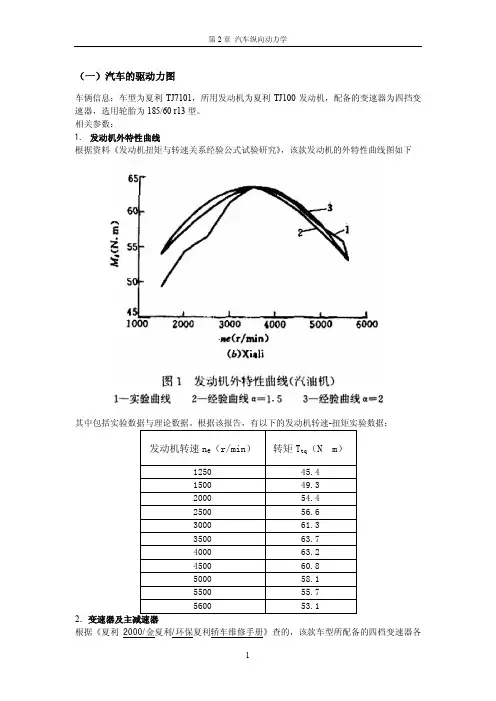
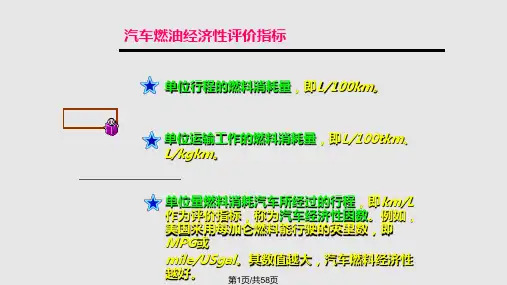
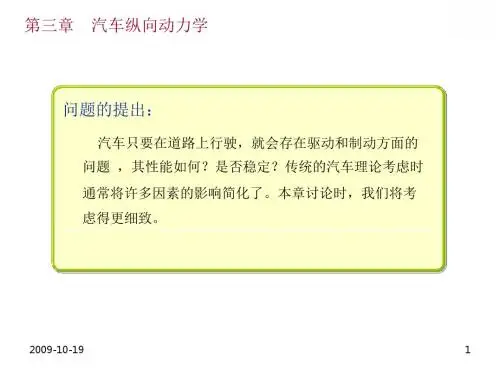
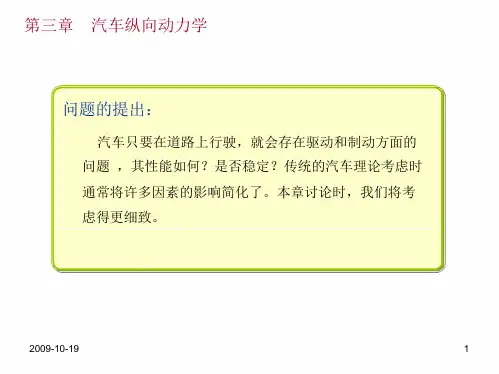
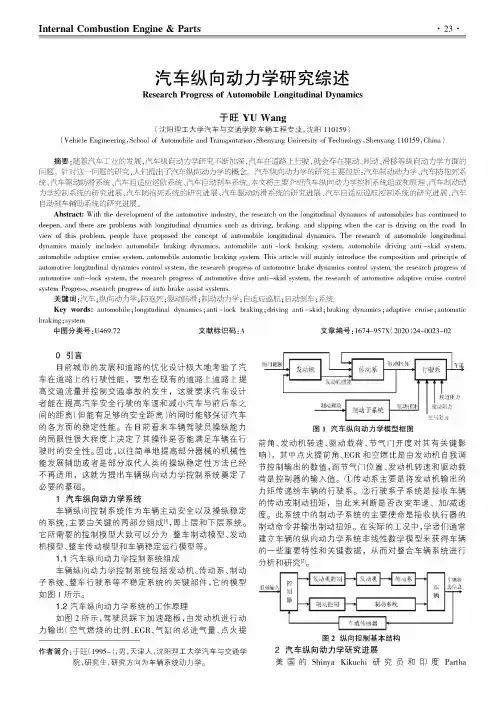
Internal Combustion Engine&Parts・23・汽车纵向动力学研究综述Research Progress of Automobile Longitudinal Dynamics于旺YU Wang(沈阳理工大学汽车与交通学院车辆工程专业,沈阳110159)(Vehicle Engineering,School of Automobile and Transportation,Shenyang University of Technology,Shenyang110159,China)摘要:随着汽车工业的发展,汽车纵向动力学研究不断加深,汽车在道路上行驶,就会存在驱动、制动、滑移等纵向动力学方面的问题。
针对这一问题的研究,人们提出了汽车纵向动力学的概念。
汽车纵向动力学的研究主要包括:汽车制动动力学、汽车防抱死系统、汽车驱动防滑系统、汽车自适应巡航系统、汽车自动刹车系统。
本文将主要介绍汽车纵向动力学控制系统组成和原理、汽车制动动力学控制系统的研究进展、汽车防抱死系统的研究进展、汽车驱动防滑系统的研究进展、汽车自适应巡航控制系统的研究进展、汽车自动刹车辅助系统的研究进展。
Abstract:With the development of the automotive industry,the research on the longitudinal dynamics of automobiles has continued to deepen,and there are problems with longitudinal dynamics such as driving,braking,and slipping when the car is driving on the road.In view of this problem,people have proposed the concept of automobile longitudinal dynamics.The research of automobile longitudinal dynamics mainly includes:automobile braking dynamics,automobile anti-lock braking system,automobile driving anti-skid system, automobile adaptive cruise system,automobile automatic braking system.This article will mainly introduce the composition and principle of automotive longitudinal dynamics control system,the research progress of automotive brake dynamics control system,the research progress of automotive anti-lock system,the research progress of automotive drive anti-skid system,the research of automotive adaptive cruise control system Progress,research progress of auto brake assist systems.关键词:汽车;纵向动力学;防抱死;驱动防滑;制动动力学;自适应巡航;自动刹车;系统Key words:automobile;longitudinal dynamics;anti-lock braking;driving anti-skid;braking dynamics;adaptive cruise;automatic braking;system中图分类号:U469.72文献标识码:A文章编号:1674-957X(2020)24-0023-020引言目前城市的发展和道路的优化设计极大地考验了汽车在道路上的行驶性能,要想在现有的道路上道路上提高交通流量并控制交通事故的发生,这就要求汽车设计者能在提高汽车安全行驶的车速和减小汽车与前后车之间的距离(但能有足够的安全距离)的同时能够保证汽车的各方面的稳定性能。
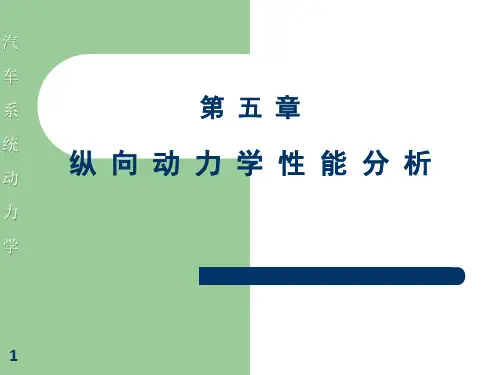
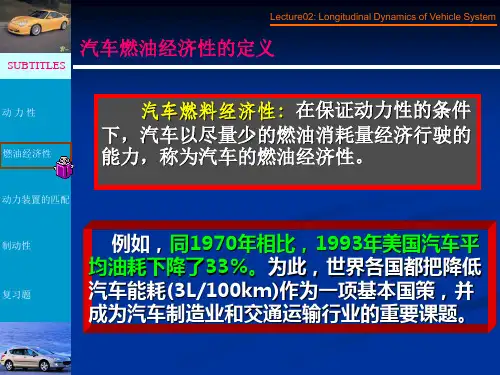




电动汽车纵向动力学模型的建立与仿真
电动汽车纵向动力学模型是模拟电动汽车在加速、减速、制动
等情况下的运动特性的数学模型。
建立该模型可以用于优化电动汽
车动力系统设计,增强电动汽车性能和安全性能。
下面是建立电动
汽车纵向动力学模型的步骤和仿真方法:
1. 车辆参数测量:包括电动汽车的质量、空气阻力、摩擦力、
动力系统的最大功率和转矩等参数。
2. 动力系统控制器建立:根据动力系统的最大功率和转矩、电
池电压等参数,建立电动汽车控制器的数学模型。
3. 驱动系统建立:根据车辆匀加速度和可变质量的动态特性,
建立电动汽车驱动系统的动力学模型。
4. 制动系统建立:根据电动汽车制动距离和制动力,建立电动
汽车刹车系统的动态模型。
5. 动力和刹车系统的相互作用建立:建立电动汽车动力和刹车
系统之间相互作用的数学模型。
6. 模型参数校正:利用实验数据对动力学参数进行校正,以提
高模型精度。
7. 仿真:基于Matlab等仿真软件,运用建立的模型,进行电
动汽车纵向动力学仿真,并对结果进行分析和优化。
通过以上步骤,可以建立一个适用于电动汽车纵向动力学模型,并且可以利用不同的软件实现该模型的仿真。